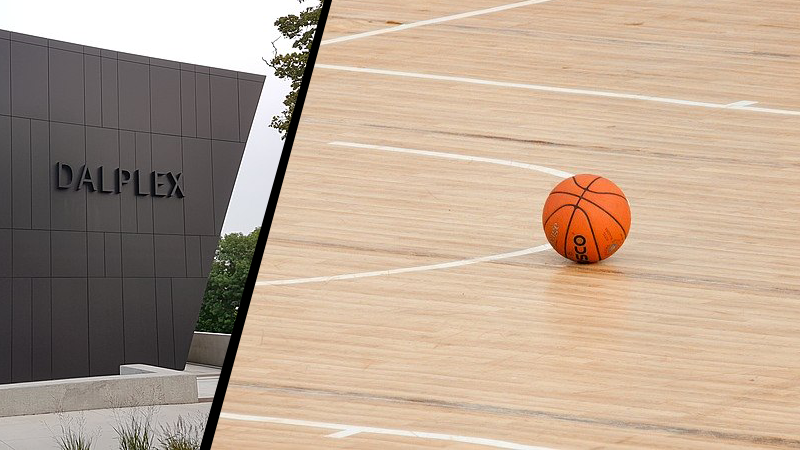
From shutdown to action
As athletes and coaches return to Halifax, questions about the next steps linger
Aug. 17. This date marked the beginning of phase three in Dalhousie University’s reopening plan for its athletic facilities. The Dalplex’s pool, basketball court and volleyball court reopened. This is in addition to facilities like the fitness hall, which reopened on Aug. 4.
Some Dalhousie Tigers athletes, like swimmer Isabel Sarty, had Aug. 17 circled on their calendars all summer.
“[Coach] Lance [Cansdale] sent us a plan moving forward with schedules and plans for COVID protocols,” Sarty said. “For those able to be in Nova Scotia, we should be in [the pool] Aug. 17.”
Quinton Dowling, who’s on the Tigers men’s volleyball team, said while players in Halifax can start practicing Aug. 17, most of his team won’t be back until the end of August.
“We’ll start practicing with a limit of 10 people at a time on the court,” Dowling said. “By mid-September, we expect that the full team will be back and ready to go.”
Some players have been back even earlier to train with teammates, like Chloe Wilson from the women’s basketball team.

“Six of us that live locally got into the gym [the week of Aug. 5] to work with coaches,” Wilson said. “Three or four more will arrive by the end of August. Gradually more people will join sessions. Then by October, we should have most of our players back.”
Learning opportunities over the break
It’s been five months since Dal’s teams have been together, but most of that time frame is the off-season in a regular year. Of course, this isn’t a regular year, and the off-season is still an essential time for athletes and coaches. Technically, the off-season will continue until January due to the suspension of fall sports.
For athletes and coaches, the past few months were an essential time for learning and adjustments, especially in April and May when stay-at-home orders were in place.
“It was quite busy,” women’s soccer head coach Cindy Tye said about her schedule during the shutdown. “Dal coaches did a lot of professional development, finding new ways to work with our student-athletes. We communicated a lot this way.”
Sarty, without an available pool to practice in, adjusted her exercise routines and learned something about herself along the way.
“It was difficult to figure out how to work out the way I did during the season, but it turned into working out to keep myself happy. I found out how therapeutic exercise was. You don’t realize it as much when you’re so used to doing it multiple times a day,” Sarty said, comparing her routines at home to her more intensive ones in the swimming program. Once summer arrived, Sarty began swimming again at a lake near her home with local swimmers.
Tye said coaches and players have remained in touch despite isolation from one another.
“There have been more team meetings over Zoom and online platforms, training over Zoom,” Tye said. “[We’re] getting creative to connect everyone virtually.”
Changes due to COVID-19 precautions
Adjustments for student-athletes don’t end at online team meetings. New challenges, such as online classes, await them over the next few weeks. Their sports will look different too, as social distancing and sanitation guidelines will almost certainly be implemented.

“I would assume we won’t have fans [once games resume]. The balls will probably be cleaned after each point, use of masks, no handshakes after the game,” Dowling said about what his next volleyball games might look like. “Generally, there are about 18 players on a team, but I can see them cutting it down to 12, 14 to promote social distancing. Having limits on coaches on the bench. Something we wouldn’t be used to.”
Even with all these changes, Dowling is cautiously optimistic that Atlantic University Sport (AUS) volleyball will be underway come January. Wilson agreed and mentioned similar precautions for basketball as Dowling did for volleyball, plus one point that could impact student-athletes’ off-court lives:
“Looking at the NBA [and their bubble-style restart], we could get similar treatment, like being careful where we go after games,” Wilson said. “Dal’s such a big school and we’ll be playing teams from [three other provinces], so Dal and the AUS might want us as isolated as possible.”
While there won’t be any road trips to other schools any time soon, Sarty said “virtual swim meets” are in the works to allow competition to resume this fall.
“These will include two separate time trials in each competition. I’m not sure of other details yet,” Sarty said. “Our team will hold races against each other, then compare times with other teams.”
Tye and her team are less fortunate in terms of playing this year. Soccer is a fall-exclusive sport. However, she said some players around Halifax have been training together since July, and winter soccer is “not off the table.”
“With the uncertainty of everything, we’re keeping our options open. We must consider travel, facilities and costs. It’s still far away,” Tye said.
Although an AUS return to play is still months away, teams getting back together has sparked the drive to compete again.
“People are coming back,” Wilson said. “By the time everyone’s here, we’ll be full steam ahead.”






